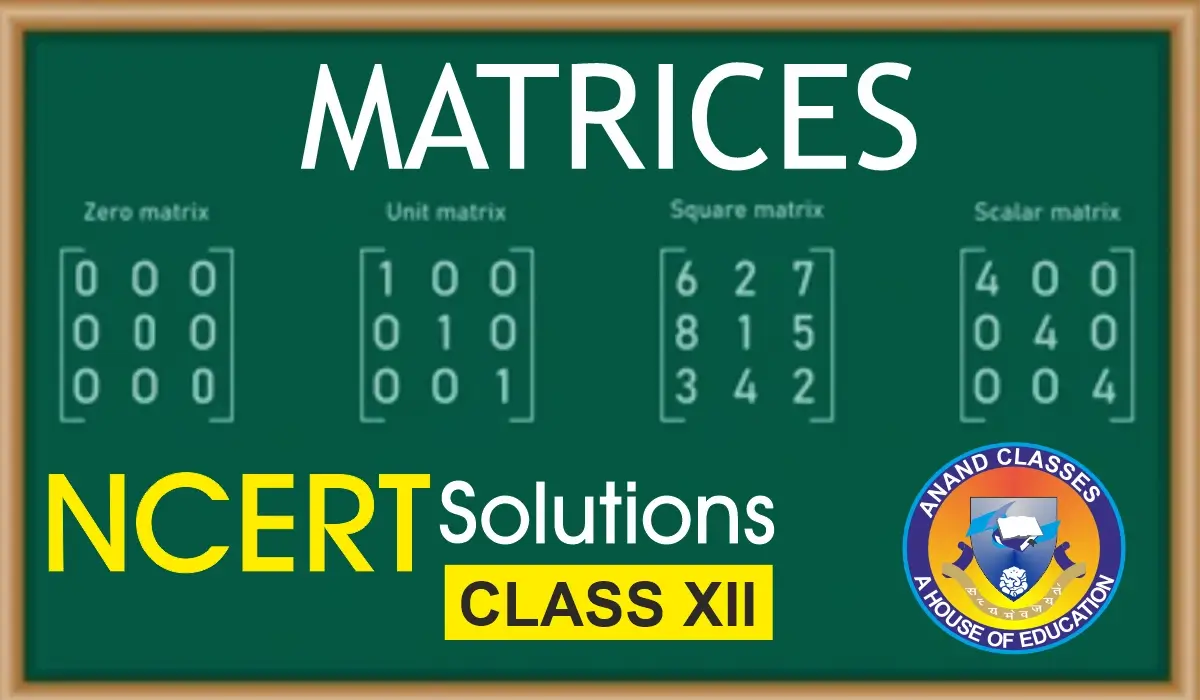Anand Classes provides comprehensive study material and practice questions for medical entrance exams, including NEET PYQs and AIIMS MCQs with solutions. This detailed guide on the classification of elements and periodicity in properties helps students understand key concepts, solve previous years’ questions, and boost their exam preparation effectively. With expert explanations and structured notes, students can master this important topic and gain confidence in tackling complex problems. Click the print button to download study material and notes.
AIPMT 2002 – Periodic Table & Classification of Elements (Periodic Properties Trend)
NEET Q.1 : Which of the following order is wrong?
(a) $NH_3 < PH_3 < AsH_3$ – Acidic strength
(b) $Li < Be < B < C$ – 1st Ionisation potential
(c) $Al_2O_3 < MgO < Na_2O < K_2O$ – Basic character
(d) $Li^+ < Na^+ < K^+ < Cs^+$ – Ionic radius
[CBSE AIPMT 2002]
Answer : Correct Option: (b)
Step 1: General trend of ionisation potential
- Across a period (left to right), the first ionisation potential increases because atomic size decreases and nuclear charge increases.
- Hence, in the second period:
$$Li < Be < B < C$$ would be expected.
Step 2: Exception between Be and B
- Beryllium (Be): configuration = $1s^2 \, 2s^2$ → stable, completely filled $2s$ subshell.
- Boron (B): configuration = $1s^2 \, 2s^2 \, 2p^1$ → less stable, easier to remove the outer electron.
- As a result:
$$I.P.(Be) > I.P.(B)$$
Step 3: Corrected order
The actual first ionisation potential order is:
$$Li < B < Be < C$$
Thus, the given order in option (b) is wrong, which makes it the correct answer to the question.
This exception-based question is a classic example in NEET PYQs Chapterwise Solutions for Periodic Table Properties by Anand Classes.
📝 Concept Takeaway
- Across a period: ionisation potential increases.
- Exception: $Be$ has higher ionisation potential than $B$ due to stable $2s^2$ configuration.
- Correct order: $Li < B < Be < C$.
AIPMT 2001 – Periodic Table & Classification of Elements (Ionization Enthalpy Trend With Exceptions)
NEET Q.2 : Correct order of 1st ionisation potential (IP) among the following elements: Be, B, C, N, O
(a) $B < Be < C < O < N$
(b) $B < Be < C < N < O$
(c) $Be < B < C < N < O$
(d) $Be < B < C < O < N$
[CBSE AIPMT 2001]
Answer : Correct Option: (a)
Step 1: General periodic trend
- Across a period (from left to right), ionisation potential increases because of increasing nuclear charge and decreasing atomic size.
- Thus, we would expect:
$$Be < B < C < N < O$$
Step 2: Exceptions in the trend
- Boron (B): configuration = $1s^2 \, 2s^2 \, 2p^1$ → removal of one $2p$ electron is relatively easier.
- Beryllium (Be): configuration = $1s^2 \, 2s^2$ → stable filled $2s$ subshell, harder to remove an electron.
So, $I.P.(B) < I.P.(Be)$. - Nitrogen (N): configuration = $1s^2 \, 2s^2 \, 2p^3$ → half-filled $p$-subshell, extra stability.
- Oxygen (O): configuration = $1s^2 \, 2s^2 \, 2p^4$ → electron–electron repulsion in paired $p$ orbital makes removal easier.
So, $I.P.(N) > I.P.(O)$.
Step 3: Correct order
Thus, the actual ionisation potential order is:
$$B < Be < C < O < N$$
This matches option (a) and is a frequently tested exception in NEET PYQs Chapterwise MCQS Solutions and Important Problems for Periodic Table Properties Chapter Class 11 Chemistry.
📝 Concept Takeaway
- Across a period: IP increases, but exceptions occur.
- $B < Be$ (because Be has a stable $2s^2$ configuration).
- $O < N$ (because N has a half-filled $2p^3$ subshell, more stable).
- Correct order: $B < Be < C < O < N$.
AIPMT 1998 – Periodic Table & Classification of Elements (Ionization Potential Class 11 Chemistry)
NEET Q.3 : The first ionisation potential (in eV) of Be and B, respectively, are
(a) 8.29, 9.32
(b) 9.32, 9.32
(c) 8.29, 8.29
(d) 9.32, 8.29
[CBSE AIPMT 1998]
Answer : Correct Option: (d)
Step 1: General trend
Across a period (from left to right), ionisation potential generally increases because of increasing nuclear charge. So, one might expect:
$$I.P.(Be) < I.P.(B)$$
Step 2: Exception due to configuration
- Beryllium (Be): electronic configuration = $1s^2 \, 2s^2$
- Stable, fully filled $2s$ subshell.
- Removing an electron from $2s$ is relatively difficult.
- Boron (B): electronic configuration = $1s^2 \, 2s^2 \, 2p^1$
- The outermost electron is in the $2p$ orbital.
- $2p$ orbital is higher in energy and less tightly bound than $2s$.
- Easier to remove compared to Be.
Thus, $I.P.(Be) > I.P.(B)$.
Step 3: Actual values
- Ionisation potential of Be = 9.32 eV
- Ionisation potential of B = 8.29 eV
So, the correct order is:
$$I.P.(Be) = 9.32 \, eV > I.P.(B) = 8.29 \, eV$$
This matches option (d) and illustrates an important exception in NEET PYQs Chapterwise Solutions of Class 11 Chemistry for Periodic Table Properties by Anand Classes.
📝 Concept Takeaway
- Across a period, ionisation potential increases, but exceptions occur.
- Stable filled subshells (Be: $2s^2$) → higher I.P.
- Electrons in $p$ orbital (B: $2p^1$) → lower I.P.
- Values: $I.P.(Be) = 9.32 \, eV$, $I.P.(B) = 8.29 \, eV$.
AIPMT 1998 – Periodic Table & Classification of Elements (Ionic Radii Class 11 Chemistry)
NEET Q.4 : In crystals of which of the following ionic compounds would you expect maximum distance between centres of cations and anions?
(a) LiF
(b) CsF
(c) CsI
(d) LiI
[CBSE AIPMT 1998]
Answer : Correct Option: (c)
Step 1: Concept of ionic distance
The distance between the centres of cations and anions in an ionic crystal depends on the sizes of the ions.
- Larger cation radius → larger separation.
- Larger anion radius → larger separation.
Step 2: Trend in cation size (alkali metals)
Group 1 cations ($Li^+, Na^+, K^+, Rb^+, Cs^+$):
- Ionic radius increases down the group.
- Thus, $Cs^+$ has the largest size among the listed cations.
Step 3: Trend in anion size (halides)
Group 17 anions ($F^-, Cl^-, Br^-, I^-$):
- Ionic radius increases down the group.
- Thus, $I^-$ has the largest size among the listed anions.
Step 4: Comparison of given compounds
| Compound | Cation ($M^+$) | Approx. Radius (pm) | Anion ($X^-$) | Approx. Radius (pm) | Distance (M⁺ + X⁻) |
|---|---|---|---|---|---|
| LiF | $Li^+$ | ~76 | $F^-$ | ~133 | ~209 |
| CsF | $Cs^+$ | ~167 | $F^-$ | ~133 | ~300 |
| LiI | $Li^+$ | ~76 | $I^-$ | ~220 | ~296 |
| CsI | $Cs^+$ | ~167 | $I^-$ | ~220 |
Step 5: Combining effects
The maximum cation–anion distance will be when the largest cation (Cs⁺) pairs with the largest anion (I⁻).
Therefore,
$$\text{Maximum distance in crystal} = \text{CsI}$$
So, the correct option is (c), consistent with trends explained in NEET and AIIMS PYQs Chapterwise Solutions of Class 11 Chemistry for Periodic Table Properties.
📝 Concept Takeaway
- Ionic distance increases with increasing ionic radii of both cation and anion.
- Down the group, cation size ↑ and anion size ↑.
- Maximum separation occurs in $CsI$ because $Cs^+$ and $I^-$ are the largest ions in their respective groups.
📚 Buy Study Material & Join Our Coaching
For premium study materials specially designed for JEE, NEET, NDA, and CBSE/ICSE Classes, visit our official study material portal:
👉 https://publishers.anandclasses.co.in/
For NDA Study Material, Click Here
For SSC Study Material, Click Here
To enroll in our offline or online coaching programs, visit our coaching center website:
👉 https://anandclasses.co.in/
📞 Call us directly at: +91-94631-38669
💬 WhatsApp Us Instantly
Need quick assistance or want to inquire about classes and materials?
📲 Click below to chat instantly on WhatsApp:
👉 Chat on WhatsApp
🎥 Watch Video Lectures
Get access to high-quality video lessons, concept explainers, and revision tips by subscribing to our official YouTube channel:
👉 Neeraj Anand Classes – YouTube Channel


